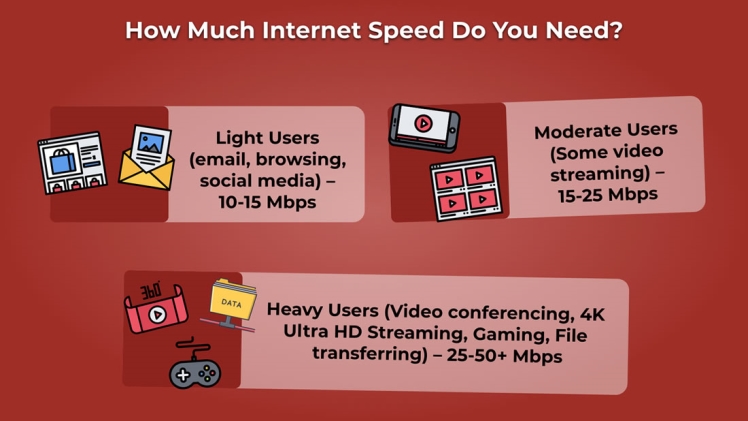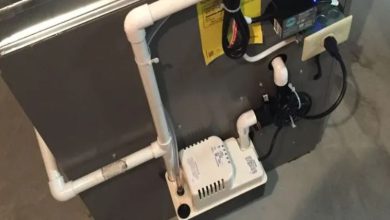Internet Speeds How Much Speeds Do You Really Need

With a stable internet connection, you should expect uninterrupted speeds that do not slow down due to physical obstructions. However, some internet connections remain subject to interference, even if your internet service provider (ISP) claims otherwise. click here to know more informatiom about Accelerated migration to Cloud
Before choosing an internet plan, you need to check your internet usage and determine the speeds you need to carry out your everyday tasks. While Windstream offers just the right speeds for an average internet user, we recommend you read this article till the end to find out the speeds you should go for!
Factors That Can Influence Your Internet Speeds
Before diving into your speed requirements, let’s find out the factors that can affect the speeds you get:
Devices That Are Connected to the Same Network
The first factor that determines the speeds you need is the number of devices that you connect to your network. While some internet providers, such as Windstream internet can connect multiple devices at the same time. However, others may fail to facilitate multiple devices simultaneously. See all information about Sw418
Since even a single user may connect multiple devices to the internet, such as laptops, smartphones, and smartwatches, you need to consider each internet user living under the same roof. Also, most households have multiple smart home appliances, which can further increase the overall speed needs of your household.
On the other hand, there is a chance that you have visitors coming to your place who may ask you to share your Wi-Fi password with them, adding up to the total number of devices connected to your network.
Here is a breakdown of the number of devices that can connect to the same network, according to the average speeds provided by most ISPs:
| Number of Devices | Internet Speed |
| 3 to 5 | 200 Mbps |
| 5+ | 500 Mbps |
| 1 to 3 | 25 Mbps |
| 3 to 4 | 100 Mbps |
| 10+ | 1,000 Mbps |
Tasks Performed by Each User Connected to the Same Network
Since the type of work you do online can affect your internet speeds, you need to consider each activity to understand your speed needs. Besides, the rest of the users connected to your network can influence the speeds you get. Field service management software users, for instance, may experience higher speed requirements due to the need for real-time updates and data syncing.
For example, simple everyday tasks, such as checking emails, scrolling on social media feeds, surfing the web, and chatting on WhatsApp can be done with minimal speeds. However, other tasks, such as streaming in HD and UHD, sharing files on the cloud, uploading photos and videos on social media, and playing online games are speed-intensive tasks. Therefore, you need to ensure that your internet provider offers just the right speeds, otherwise, your internet usage can take a toll on the performance of your internet network. This may show up as buffering issues or lag that can delay the responses to your commands.
Here are some of the most common online tasks with the speeds you may need versus the speeds that we recommend:
| Online Activity | Recommended Speeds | Required Speeds |
| Streaming in HD | 10-20 Mbps | 5-10 Mbps |
| Streaming in 4K | 35 Mbps | 25 Mbps |
| Online gaming | 25-35 Mbps | 3-6 Mbps |
| Checking emails | 1 Mbps | 1 Mbps |
| Scrolling on social media | 10 Mbps | 3-5 Mbps |
| Attending video calls | 10-20 Mbps | 3-5 Mbps |
| Web browsing | 5-10 Mbps | 3-5 Mbps |
Speed Requirements for Streaming Videos and Video Games
Since streaming movies and video games are two of the most speed-intensive tasks, it is always a good idea to double-check whether your ISP can fulfill your speed requirements or not. But, if you are skeptical about how much speed you may consume, check out your speed requirements according to your online activity:
| Online Activity | Speed Requirements |
| Streaming in SD | 3 Mbps |
| Streaming in HD | 5 Mbps |
| Streaming in 1080p UHD | 4-16 Mbps |
| Live streaming | 3-15 Mbps |
| Streaming video games | 25 Mbps |
Apart from video quality, many other factors play an important role in determining the speeds you need. The device you are using to stream a video should be considered to know your actual speed requirements. For example, if you are streaming on your smartphone, then the ideal video quality would be SD or HD. Whereas, it is always a good idea to stream in 720p, HD, or UHD on your smart TV, according to its screen size and resolution. This way, you can choose the right video quality according to your screen size and minimize the speeds that you may consume.
Final Thoughts
Most online activities ask for speeds ranging between 1 and 20 Mbps. On the other hand, you may not notice, but some everyday tasks may require speeds as high as 25 Mbps. Besides, you should consider the 2 main factors listed above to determine if your internet connection can fulfill your internet usage requirements or not. For optimal upload and download speeds, subscribe to an internet plan that offers exactly what you are looking for!




